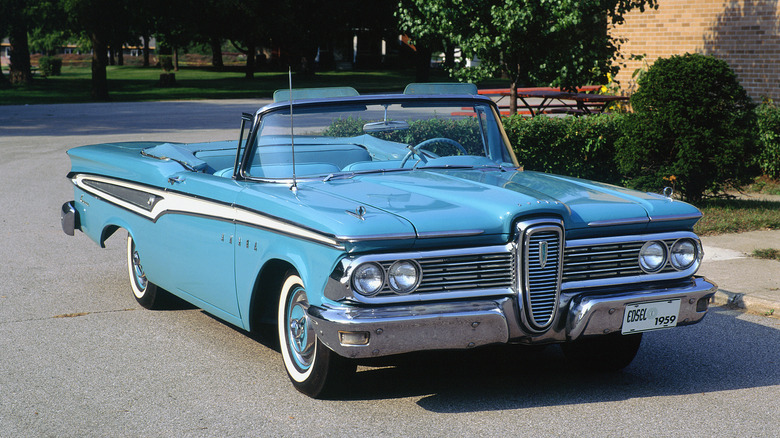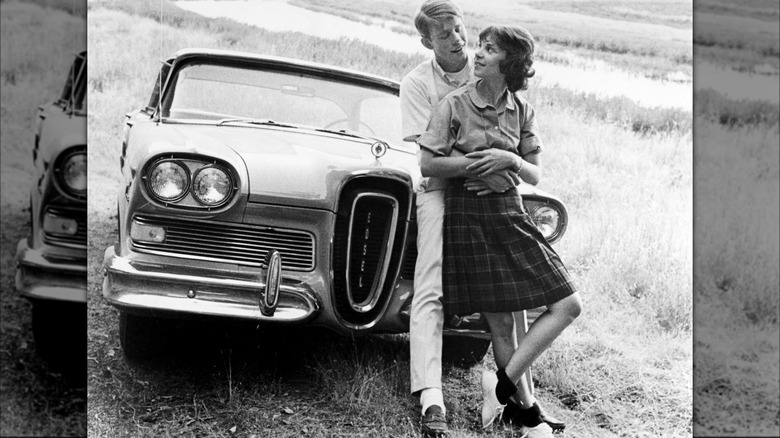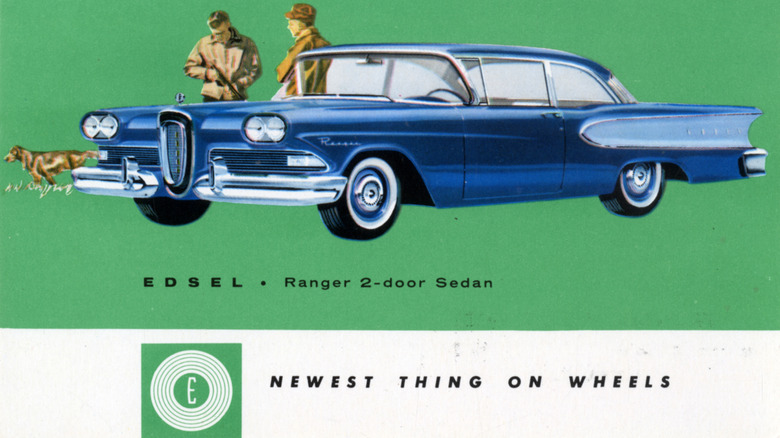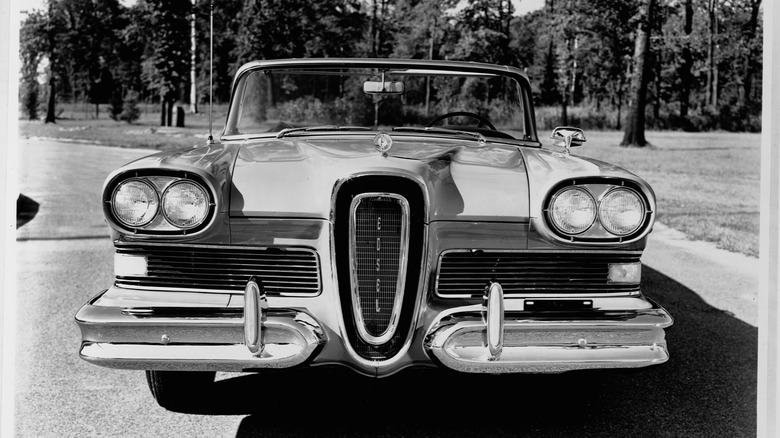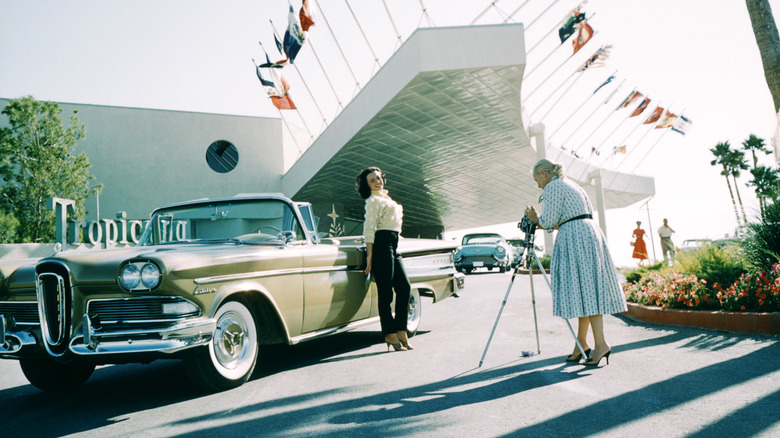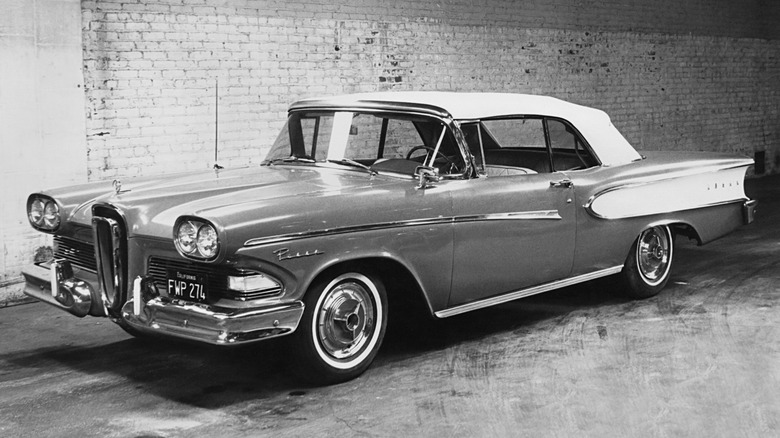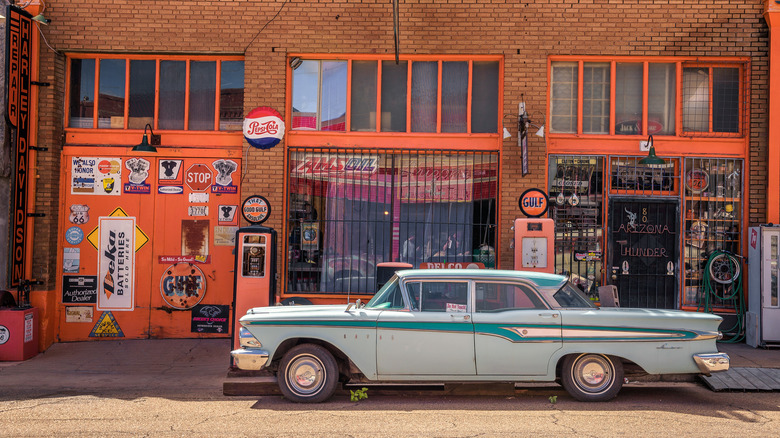Ford's Big Flop: The History Of The Edsel Disaster
The story of the Edsel serves as a cautionary tale for corporations, highlighting the consequences of high expectations, overconfidence, and large budgets when they clash with actual consumer needs and market dynamics.
Named after Henry Ford's son and having its own dedicated division within the company, the Edsel was expected to be a groundbreaking success, but it fell short of those lofty ambitions. The failure of the Edsel resulted from a combination of factors, including design and marketing missteps, public perception, and damage to the brand. Despite the fascination surrounding the Edsel's failure, it also offers valuable lessons to learn from. Henry Ford's famous quote, "Failure is simply the opportunity to begin again, this time more intelligently," captures the essence of turning setbacks into opportunities for improvement and growth.
The legacy of the Edsel Ford continues to remind businesses to remain attuned to the actual needs and desires of consumers, not to overextend their confidence, and to approach endeavors with a more thoughtful and customer-centric approach. By learning from the past and adapting strategies accordingly, companies can navigate the challenges of the market and build a more successful and sustainable future. Here is the story of Ford's big flop, the history of the Edsel disaster.
The Grand Unveiling: High Hopes and Anticipation
The Ford Edsel was going to be the car of the future. It was going to change the way drivers and other car manufacturers looked at design and cars. Designed from the ground up with the newest technology, it was going to be the smoothest ride drivers ever felt. Ford spared no expense in hyping and advertising the Edsel across various media platforms. The marketing campaign was cleverly designed, revealing the car's new features bit by bit, creating a sense of anticipation among the public.
On the designated "E-Day," the Edsel's official unveiling took place, turning the event into a grand nationwide spectacle. Dealerships nationwide showcased the Edsel with extravagant displays, resembling lively fairs with live music, entertainment, and food.
However, despite the immense hype and nationwide celebrations, the Edsel's initial reception was disappointing. Customers were not impressed with its so-called "futuristic" appearance, and the unique grille design was subject to mockery, often referred to as a "horse collar." The public's reaction mirrored the humorously similar results depicted in "The Simpsons" episode where Homer designs a car. In the end, the Ford Edsel failed to live up to its ambitious promises and lofty marketing campaigns, making it one of the biggest car flops of all time.
Design and Marketing Missteps: A Product Doomed to Fail
Ford introduced several innovative practices when designing and marketing the Edsel, some of which are still standard in marketing today. However, they ultimately failed to follow through, leading to the car's financial failure. One area where they faltered was the design itself. The Edsel's front grille deviated from Ford's signature style, which didn't resonate with consumers. Although the exterior had a futuristic appearance, the interior and frames were based on previous Ford and Mercury models, creating a sense of familiarity that disappointed potential buyers who expected a truly revolutionary experience. The decision to maintain compatibility with existing Ford products resulted in the perception that the Edsel fell short of its promise to be the car of the future.
Ford's strategy initially showed promise, as it conducted extensive market research by polling potential customers about their preferences for a car. Gathering substantial data, they swiftly translated it into design and production plans. However, their critical mistake was not following up with their target audience to validate their initial findings and assess whether consumers still desired what the Edsel offered. Effective market research requires multiple rounds of feedback to stay in sync with consumers' evolving preferences, but Ford overlooked this crucial step. As a result, they ended up with features and designs that sounded good on paper, but failed to align with actual consumer demands.
While Ford's pioneering efforts in marketing and market research were commendable, their inability to reassess consumer preferences and refine the Edsel's concept led to its ultimate downfall. The lessons learned from the Edsel's failure continue to emphasize the importance of ongoing consumer engagement and adaptation in successful marketing campaigns.
The Edsel Ford by the Numbers
Between 1958 and 1960, a total of 118,287 Edsel Fords were produced, comprising 18 different models. Among them, the rarest was the 1960 Ranger Convertible, with only 76 units made, and finding one in good condition these days is rarer still. For the launch of the Edsel on E-Day, Ford went all out by opening or converting 1,187 new car dealerships exclusively dedicated to selling the Edsel. This brought Ford to just over 10,000 dealerships for all Ford products. At the time, competitors like Chrysler had approximately 10,000 dealerships and General Motors had around 16,000. The Edsel was supposed to bridge the gap between Ford and its competitors.
To create excitement and anticipation for E-Day, Ford invested significantly in a lavish marketing campaign that encompassed various mediums, including jingles, teaser campaigns, celebrity appearances, music, fairs, television ads, radio ads, and newspaper ads. The company spent approximately $12 million on advertising alone for the Edsel. Unfortunately, despite these efforts, the Edsel was not well-received by the public, resulting in a staggering overall loss of around $250 million for the company.
Back in 1958, the base cost of a standard Edsel was approximately $2,800. Considering inflation, this would be equivalent to around $30,000 in 2023. The high expectations surrounding the Edsel's futuristic branding and luxury positioning ultimately did not align with consumer preferences and market trends, contributing to its financial failure.
Public Perception and Brand Damage: The Edsel's Downfall
The Edsel faced a significant challenge regarding its brand perception and positioning in the market. Originally intended as a mid-sized vehicle, it was meant to bridge the gap between cheaper models and luxury cars, with its own department alongside Ford and its subsidiaries, Lincoln and Mercury. Based on market research, Ford aimed to compete with established brands like Buick, Oldsmobile, and Dodge, while also rebranding and redesigning Lincoln as a luxury vehicle to create space for the Edsel in the market.
However, Ford failed to foresee an impending recession, which shifted consumer preferences away from mid-sized and luxury cars toward more compact models. Consequently, the Edsel's futuristic and luxury-focused marketing campaign didn't resonate with the public, and the car's potential target market quickly closed. The Edsel's fate was further sealed by Ford's narrow focus on mid-sized cars, ignoring the larger industry trends. Despite conducting extensive market research, they missed the broader perspective, leading to a misguided investment in marketing efforts that ultimately went to waste.
With such high expectations set by the grand marketing campaign, the Edsel had to outsell all other cars on the market to live up to the hype. However, as consumers realized that the advertised benefits were primarily for Ford Motors rather than for them, the media and public turned against the vehicle and the brand. Despite the financial failure, Ford was able to salvage the situation by integrating the Edsel's manufacturing into other Ford product lines, avoiding the need to sell off or scrap the assets entirely.
Lessons Learned: What Ford Learned from the Edsel Disaster
Launching the Edsel as a stand-alone brand proved to be a risky move, as it left no room for a middle-ground outcome. The car had to be a resounding success to justify the substantial investment or face a complete failure. Even a moderately successful response would not have been sufficient, given the significant financial resources Ford had poured into the project. Furthermore, the new dealerships Ford had established represented untested markets that required extensive training and development from scratch. Managing multiple new entry points into unfamiliar territories added complexity and heightened risk to the project. At the same time, Ford was simultaneously pushing the Lincoln brand into the luxury market, which demanded its own set of adjustments and challenges.
On paper, the strategy looked promising, aiming to secure the Edsel's dominance in the mid-tier market. However, with a looming recession, the very market the Edsel was meant to conquer was already showing signs of decline. This economic downturn, combined with a failure to truly understand the wants and needs of their target consumers, resulted in the Edsel's demise.
The Edsel campaign serves as a valuable lesson in business and economic classes, emphasizing the importance of customer-focused research over a profit-centered approach. It highlights the critical need to align corporate strategies with actual consumer demands and market realities, to avoid investing in projects that may ultimately miss the mark.
The Edsel Collectible
Despite its initial commercial failure, the Edsel has transformed into a highly sought-after collectible in the present day. Many of the advanced technologies introduced at the time, like seatbelts, and improved speedometers and brakes, which were viewed as unnecessary back then, have become standard features in modern cars. The combination of these innovative features with the Edsel's overall design created a sense of dissonance during its initial release.
Today, the scarcity of remaining Edsels adds to their allure as a collector's dream. With only a few thousand surviving in the world, they have become a cherished piece of automotive history. Their limited availability, unique appearance, and storied past make them appealing to car aficionados who relish the opportunity to own a classic and quirky automobile. The commercial failure of the Edsel seems to have contributed to its rise as a collector's item. Ironically, it is now more successful as a car oddity and collectible, joining the ranks of cars that went from major flops to worth a massive fortune.
Many surviving Edsels have aged, often exhibiting signs of wear due to use and exposure to the elements. This natural degradation, along with the scarcity of spare parts, contributes to the challenges collectors face in preserving these vehicles. The price of an Edsel can vary significantly depending on its condition. A rusted frame may be available for under $5,000, while a driveable Edsel in operational condition could easily fetch $15,000 or more, even if it's not in the best shape. A pristine, original Edsel model in exceptional condition would likely become a prized possession among collectors, and its value would be difficult to determine precisely, as enthusiasts would eagerly compete for ownership.
